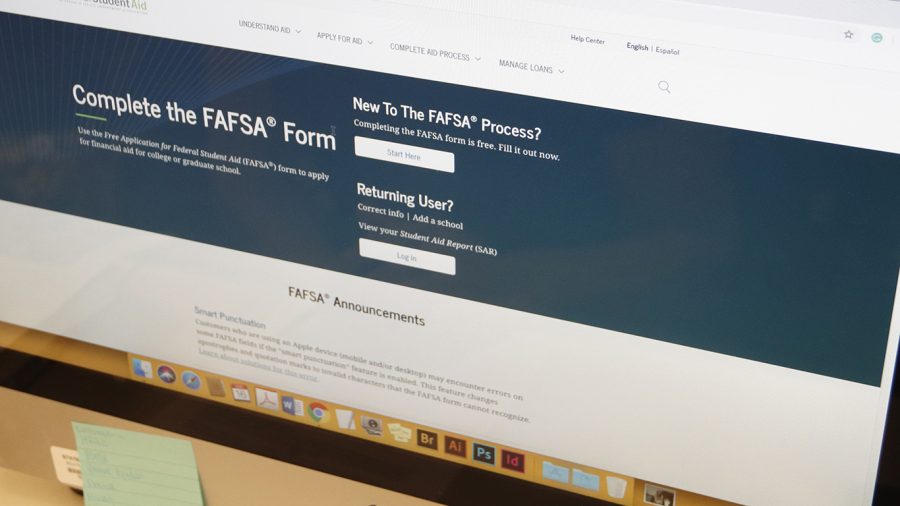How to ensure your FAFSA is filled out correctly
Gerard Borne/The Lion’s Roar
Studentaid.gov provides resources for students as they fill out their FAFSA forms. The Office of Financial Aid recommends that students fill out the form as soon as possible due to limited funds .
With the 2020 spring semester reaching its halfway point, several students are beginning to fill out the FAFSA. Students may find it difficult to fill out the correct information.
The Free Application for Federal Student Aid (better known as FAFSA) is a federal form in which students can apply for financial aid. The 2020-2021 FAFSA form has been available on studentaid.gov since Oct.1 of last year.
To receive any type of financial aid, students must fill out the FAFSA form for each academic year. Due to limited funds, the Office of Financial Aid recommends students fill out the form as soon as possible.
Before filling out the FAFSA form, it is recommended that students create a Federal Student Aid ID. According to the Federal Student Aid website, creating an ID before filling out the form will make the process easier.
“While you can get your FSA ID as you’re completing the FAFSA form online, getting it ahead of time and using it to begin your FAFSA form on fafsa.gov or on the myStudentAid mobile app cuts down on errors and delays,” stated the website.
Students will need the following documents to fill out the form: social security card, driver’s license, W-2 forms, Federal Income Tax Returns, records of any scholarships or grants or any bank statements and any mortgage information.
If the student is not a U.S. citizen, they will need to provide proof of permanent resident status.
Questions asked on the FAFSA form pertain to a student’s financial situation and are used to determine aid needed.
Oftentimes, students can encounter problems while answering these questions and filling out the form.
Katie Delaneuville, financial aid counselor, detailed some of the most common problems students encounter while filling out the FAFSA involve either misunderstanding what the form is asking or listing incorrect or incomplete information.
“For example, one problem I see often is that students put their parent’s income when asked for their income,” said Delaneuville. “Some other issues are students completing the parent portion of the FAFSA and the parent wouldn’t sign the FAFSA. That’s a big issue to fix on our side because it can take a couple of days to fix.”
According to Delaneuville, the best way to ensure students are filling out the correct information on their FAFSA is to utilize the IRS Data Retrieval Tool. This service directly links tax returns to the FAFSA.
“That saves a lot of time for them having to look on their tax returns and see what goes where. It also saves a lot of time when the FAFSA gets to us, because students are less likely to be selected for verification from the Department of Education since the information is coming directly from the IRS,” explained Delaneuville.
With the abundance of information that must be put onto the form, Delaneuville advises students to enter the information carefully and be vigilant for any errors.
“Just double-check everything you are putting onto the form,” said Delaneuville. “You probably think I don’t see this often, but a lot of times, I see students’ forms that are just one number off their social and we never receive it and we have to troubleshoot what happened. Make sure all the information is correct.”
The 2020-2021 FAFSA form can be found on studentaid.gov.
Your donation will support The Lion's Roar student journalists at Southeastern Louisiana University.
In addition, your contribution will allow us to cover our annual website hosting costs.
No gift is too small.

Dylan Meche is a Political Science major from Baton Rouge and serves as Opinions Editor. He has been a reporter for The Lion's Roar since August of 2019....






